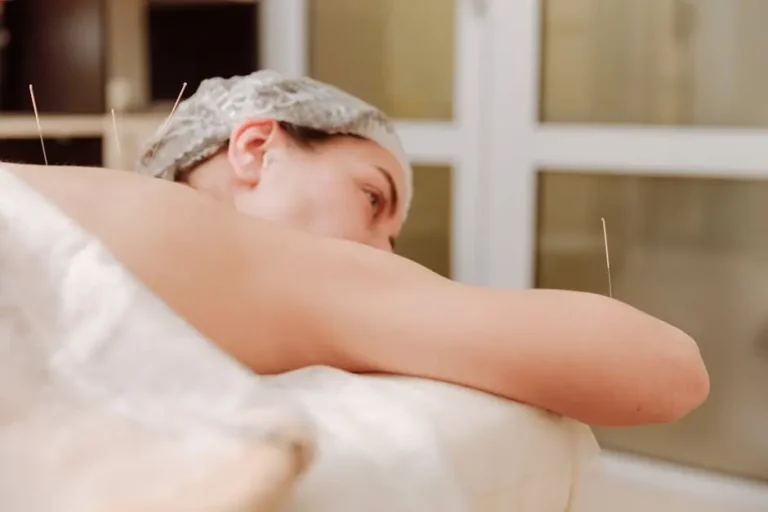7 Essential Tips for Athletes Using Acupuncture Needles for Pain Management
Acupuncture has gained popularity among athletes as a natural method for pain relief and recovery. If you’re considering using acupuncture needles to help manage your pain, it’s essential to equip yourself with the right knowledge. In this post, we’ll explore seven essential tips that can enhance your experience and effectiveness of acupuncture treatments. Whether you’re a seasoned athlete or just starting, these tips will guide you on your path to better pain management through acupuncture.
1. Finding a Qualified Practitioner
It’s essential to choose a licensed and experienced acupuncturist who specializes in treating athletes. A qualified practitioner will understand your specific needs and tailor treatments to support your performance.
Seek recommendations from fellow athletes or trainers who have had success with acupuncture. Personal testimonials can lead you to practitioners that align with your goals. During your first appointment, don’t hesitate to ask about their experience, techniques, and how they approach treatment.
Trust your instincts as well. If you don’t feel comfortable or confident in your acupuncturist’s abilities, it’s perfectly okay to look for someone else. Your comfort and trust are pivotal in making acupuncture sessions effective.
2. Understanding the Body’s Energy Pathways
Knowledge of meridians and energy flow can help you appreciate how acupuncture works. Understanding how needles stimulate these pathways can enhance your experience and your body’s response.
The human body is lined with invisible channels known as meridians, allowing energy—or Qi—to flow freely. When this energy is disrupted, pain and discomfort can ensue. Acupuncture needles insert themselves along these meridian points, restoring balance and helping your body heal.
Visualization can be a helpful tool here. Imagine your body as an intricate network of roads; when a road is blocked, traffic (or energy) can’t flow smoothly. Using acupuncture as a method to clear those blockages can enhance not only your recovery but also improve your overall athletic performance.
3. Communicating Your Pain Levels
Be honest about your pain levels and symptoms during each session. Open communication with your acupuncturist can lead to more effective treatments tailored to your needs.
Consider keeping a pain diary to document your experiences between sessions. Note what triggers your pain, the intensity, and how you feel after treatment. This information can provide valuable insights for your acupuncturist, allowing them to adjust your treatments accordingly.
Remember, your acupuncturist is there to help you. They will rely on your feedback to guide their techniques. So, if something isn’t working—or if something feels amazing—be sure to share that knowledge. It can make a world of difference in your treatment outcomes.
4. Incorporating Acupuncture into Your Training Regimen
Integrate acupuncture treatments into your training routine, not just after injuries occur. Regular sessions can prevent injuries and help maintain optimal performance.
Think of acupuncture as part of your prehab routine—an proactive measure to keep your body in peak condition. Scheduling regular sessions can help maintain your energy levels, which is crucial during intense training periods.
Even elite athletes recognize the value of using acupuncture not only to recover but also to fortify their physical and mental resilience. Establishing a consistent schedule allows you to reap the benefits throughout the season rather than playing catch-up after an injury.
5. Pairing Acupuncture with Other Recovery Methods
Combining acupuncture with stretching, massage, or physical therapy can enhance recovery. Explore complementary methods to boost your overall wellness.
Each recovery method has its unique benefits. For example, massage releases muscle tension while acupuncture addresses energy flow. When used together, they can provide a more holistic approach to healing. It’s like combining forces for a greater outcome.
Consider alternating sessions of acupuncture with other therapies to find what truly resonates with your body. Finding the right mix can make all the difference, ensuring you’re not just recovering but thriving.
6. Listening to Your Body’s Response
Your body knows best. Pay close attention to how you feel after sessions and adjust your treatment plan as necessary to achieve the best results.
Optimizing your acupuncture experience means being aware of what works and what doesn’t. After each session, give yourself time to reflect on your feelings. Feel more relaxed? Is there a lingering tightness? Each observation is a clue to how your body is responding.
Always remember that healing is not linear. Some days will be better than others, and that’s entirely normal. Your body is a unique vessel, and understanding its signals will empower you on your recovery journey.
7. Maintaining Consistency
Consistency is key to experiencing the full benefits of acupuncture. Schedule regular appointments and commit to the process for long-term pain management.
Think of it this way: just as you wouldn’t train for a marathon by running once a month, you can’t expect to experience the full benefits of acupuncture with sporadic visits. Consistency over time deepens the effects, allowing your body to adapt and respond more positively.
Plan ahead and view acupuncture sessions as unmissable practices in your athletic routine. The moment you prioritize this practice as essential, you shift your mindset toward embracing healing and making it a core part of your training.








